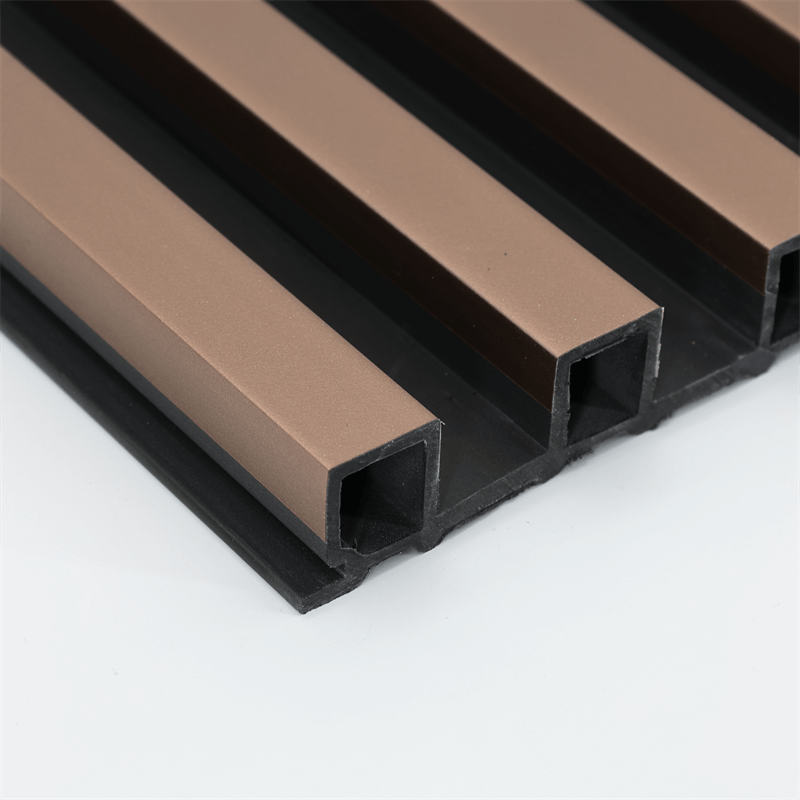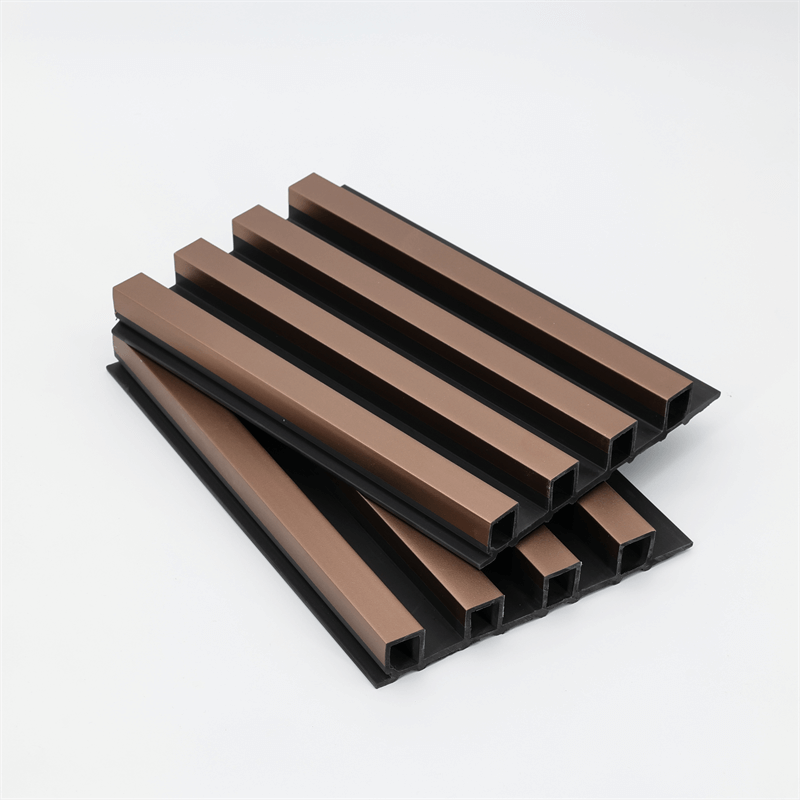WPC (Wood Plastic Composite) wall panels have gained significant popularity in recent years due to their unique combination of durability, sustainability, and aesthetic appeal.
While traditionally used as exterior cladding, WPC wall panels are now being creatively integrated into both commercial and residential architecture in innovative ways.
This essay explores the diverse and innovative applications of WPC wall panels, examining their use in interior spaces, feature walls, curved surfaces, and modular designs.
I. WPC Wall Panels in Interior Spaces:
Traditionally, WPC wall panels were primarily used for exterior applications, such as façades and outdoor cladding.
However, their versatility and aesthetic appeal have led to their integration into interior spaces as well.
WPC panels can transform the walls of residential and commercial interiors, creating a warm and inviting ambiance.
In residential architecture, WPC wall panels can be utilized in living rooms, bedrooms, kitchens, and other areas to add a touch of natural beauty.
The panels can be installed as accent walls or as complete wall coverings, bringing texture and visual interest to the space.
The wide range of colors, finishes, and patterns available in WPC panels allows for endless design possibilities, catering to various interior styles.
In commercial settings, WPC wall panels can enhance the ambiance of offices, hotels, restaurants, and retail spaces.
They can be used to create focal points, delineate different zones, or showcase branding elements.
The durability and low maintenance requirements of WPC panels make them suitable for high-traffic areas, ensuring long-lasting beauty and performance.
II. Feature Walls with WPC Wall Panels:
One of the innovative applications of WPC wall panels is the creation of feature walls. A feature wall is a focal point in a space that grabs attention and adds visual interest.
WPC panels offer endless possibilities for creating stunning feature walls that become conversation starters in both commercial and residential environments.
Feature walls can be designed using a combination of WPC panels with different colors, textures, or patterns.
By strategically placing these panels, designers can achieve dramatic and eye-catching effects.
Feature walls created with WPC panels can be found in lobbies, reception areas, restaurants, and even bedrooms, adding a sense of depth, dimension, and artistic flair to the space.
Moreover, feature walls made with WPC panels can be customized to reflect the brand identity of a business or the personality of a homeowner.
With the ability to incorporate signage, logos, or artwork onto the panels, WPC feature walls become powerful marketing tools or personal statements that leave a lasting impression.
III. Curved Surfaces with WPC Wall Panels:
WPC wall panels offer the advantage of flexibility, making them an ideal choice for applications on curved surfaces.
Traditional cladding materials often pose challenges when it comes to conforming to curved or irregular shapes.
However, WPC panels can be easily bent, molded, or shaped to fit curved walls or columns, enabling the creation of visually striking architectural elements.
Curved surfaces clad with WPC panels can be found in commercial buildings, such as shopping malls, airports, or entertainment venues.
The smooth and seamless appearance of WPC panels on curved walls adds elegance and sophistication to the overall design.
In residential architecture, curved feature walls or accent walls made with WPC panels can serve as captivating focal points, enhancing the overall aesthetic appeal of the space.
The ability of WPC wall panels to conform to curved surfaces expands the design possibilities and allows architects and designers to push the boundaries of creativity.
It opens up opportunities to create unique and visually dynamic spaces that leave a lasting impression on visitors and occupants.
IV. Modular Designs with WPC Wall Panels:
Modular construction methods have gained traction in recent years due to their efficiency, cost-effectiveness, and sustainability.
WPC wall panels align well with the principles of modular design, offering a versatile and easily deployable solution for modular construction projects.
WPC panels can be prefabricated in standard sizes, making them compatible with modular construction systems.
They can be used to create modular wall units that can be easily assembled, disassembled, or reconfigured as needed.
This flexibility allows for easy adaptation to changing spatial requirements, making WPC panels a preferred choice for office spaces, retail environments, and temporary structures.
The modular nature of WPC wall panels also facilitates off-site construction and reduces construction waste.
Since the panels are manufactured to precise specifications, there is minimal material wastage during the construction process.
The use of WPC panels in modular designs contributes to faster construction timelines, reduced costs, and a more sustainable approach to building.

The innovative applications of WPC wall panels in commercial and residential architecture are transforming the way we design and experience interior spaces.
From interior installations to feature walls, curved surfaces, and modular designs, WPC panels offer endless possibilities for creative expression.
By integrating WPC wall panels into interior spaces, designers can create warm and inviting environments that captivate occupants.
The use of WPC panels in feature walls adds visual interest and branding opportunities.
The ability of WPC panels to conform to curved surfaces opens up new design avenues, while their compatibility with modular construction methods promotes efficiency and sustainability.
The versatility, durability, and aesthetic appeal of WPC wall panels position them as a go-to material for innovative architectural applications.
As architects and designers continue to push the boundaries of creativity, WPC panels will undoubtedly play a significant role in shaping the future of commercial and residential architecture.
Additionally, the innovative applications of WPC wall panels extend beyond their aesthetic and functional benefits. They also contribute to sustainable design practices and environmental conservation.
The use of WPC panels in commercial and residential architecture aligns with the growing demand for eco-friendly and energy-efficient construction materials.
WPC panels are composed of a blend of recycled wood fibers and high-quality polymers, reducing the reliance on virgin timber and minimizing waste.
By repurposing wood fibers and utilizing recycled materials, the use of WPC panels helps to conserve natural resources and decrease the carbon footprint associated with traditional building materials.
Moreover, the manufacturing process of WPC panels involves innovative techniques that prioritize sustainability.
These panels are created through a combination of extrusion and molding processes, which utilize less energy and water compared to the production of conventional wall cladding materials.
The reduced energy consumption and water usage contribute to a more eco-friendly manufacturing process, further enhancing the sustainable attributes of WPC panels.
Furthermore, WPC wall panels have a long lifespan and require minimal maintenance.
Their resistance to moisture, rot, and pests ensures that they maintain their structural integrity and aesthetic appeal over time.
This durability and low-maintenance nature translate into long-term cost savings for building owners and a reduced environmental impact.

Additionally, WPC panels can be recycled at the end of their lifecycle, further reducing waste and contributing to a circular economy.
The ability to recycle WPC panels into new products or materials helps to minimize landfill waste and supports the principles of a sustainable and regenerative building industry.
The innovative applications of WPC wall panels in commercial and residential architecture also promote energy efficiency.
The insulating properties of WPC panels contribute to improved thermal performance in buildings, reducing the reliance on artificial heating and cooling systems.
This, in turn, leads to energy savings and a reduced carbon footprint.
Furthermore, the integration of WPC panels in modular designs enhances the sustainability of construction projects.
The prefabricated nature of WPC panels allows for efficient off-site manufacturing, reducing construction waste and minimizing disruption to the surrounding environment.
Modular construction methods also contribute to faster project completion times, resulting in reduced energy consumption during the construction phase.
In conclusion, the innovative applications of WPC wall panels in commercial and residential architecture not only provide aesthetic versatility and functional benefits but also contribute to sustainable design practices. Through their use in interior spaces, feature walls, curved surfaces, and modular designs, WPC panels offer eco-friendly alternatives to traditional construction materials.
They help to conserve natural resources, reduce waste, and promote energy efficiency.
As the demand for sustainable and visually appealing building materials continues to rise, WPC wall panels will play an increasingly important role in shaping the future of architecture and design.

